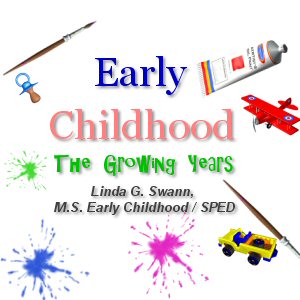Creative Thinking Skills
 A child’s creative development begins at birth and continues into childhood. All children develop creative-thinking skills. Scribbles with crayons, collages, and blocks, helps develop ideas about the world and enables the child to think creatively. A child is then able to expresses ideas and feelings visually through art forms. As parents and caregivers, we must embrace each child’s creativity, providing appropriate materials and encouragement. Use the developmental stages to determine what should be made available to the child for maximum creative development.
A child’s creative development begins at birth and continues into childhood. All children develop creative-thinking skills. Scribbles with crayons, collages, and blocks, helps develop ideas about the world and enables the child to think creatively. A child is then able to expresses ideas and feelings visually through art forms. As parents and caregivers, we must embrace each child’s creativity, providing appropriate materials and encouragement. Use the developmental stages to determine what should be made available to the child for maximum creative development.
For the first two years of life, a child uses all senses and feelings to interpret the environment and the world they live in. During this time, they pay attention to light and dark, colors, shapes, movement, textures, and patterns. They are drawn to materials and objects with bright colors and interesting textures. They explore new things and communicate through postures, gestures, facial expressions, cries, and other sounds before using words and phrases. A child’s interpretation of his world is part real and part self interpretation.
In the next year, age 2 to 3, creativity expands. The child enjoys scribbling but can not tell the difference between the drawing and the real object. When adults ask what has been drawn, names will be given even if nothing particular was drawn. A crayon may run across the paper to represent a dog running through the yard. Marks may go off the paper as the child fails to distinguish the paper from the world. This is a time to enjoy exploring new materials. It is also the beginning of developing a sense of spatial relations.
From ages 3 to 4, a child discovers that representations of object’s can be made using blocks or marks on paper. Recognizable shapes, such as circles, ovals, rectangles, triangles, and crosses, are now emerging. Using these shapes, the child begins creating with a specific intent. They will attempt drawing people, buildings and animals.
During the next year, from 4 to 5 years, the child develops a sense of ownership of creative attempts. Emotions, such as joy, sadness, and anger can be seen in drawings. During this time, accidental marks on a drawing, will be explained as part of the story. Creativity flourishes during this year.
The 5 and 6 year old child, develops control over the creations. They can now control the lengths of lines and size of shapes. The child makes more realistic drawings, with greater differences between people and animals. Size differences are seen in adults and children, and Daddy and Mommy. More complex pictures are draw using suns, clouds, trees and flowers. A sense of individual style emerges, making it easy to recognize one child’s drawing from another.










